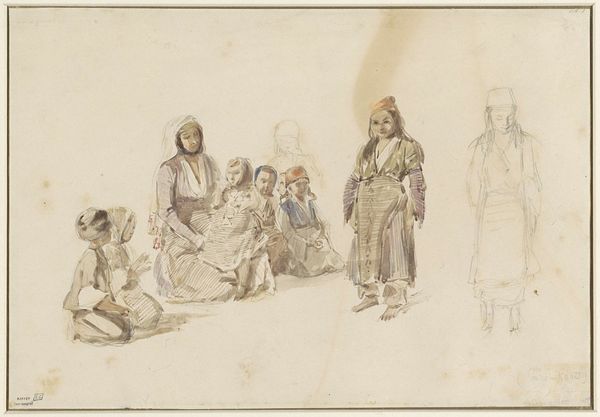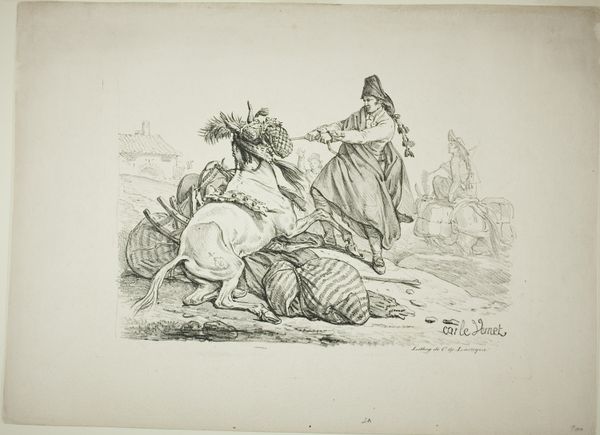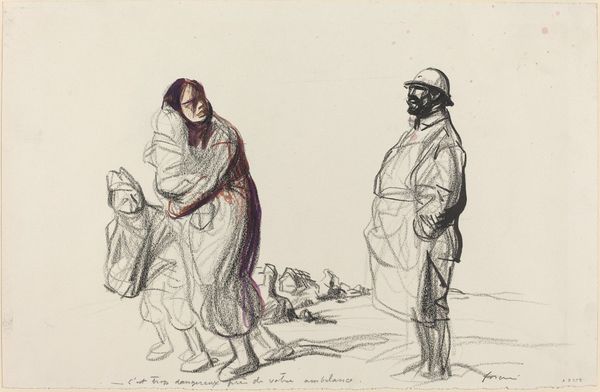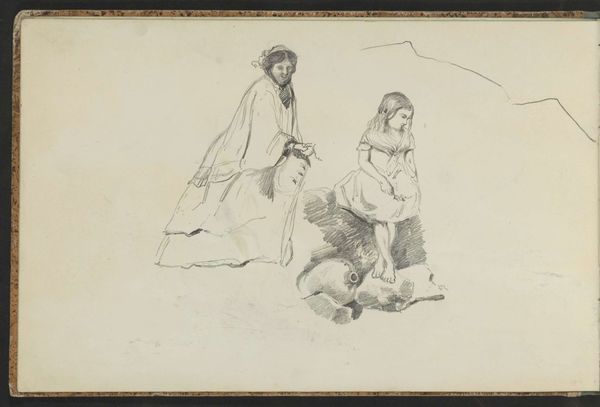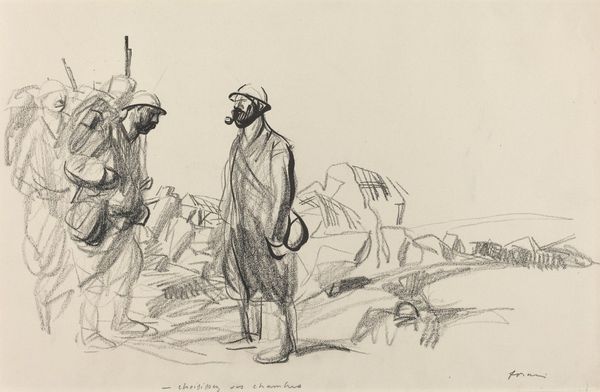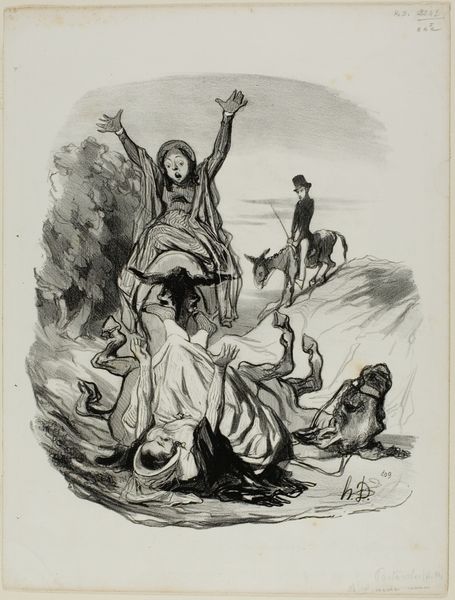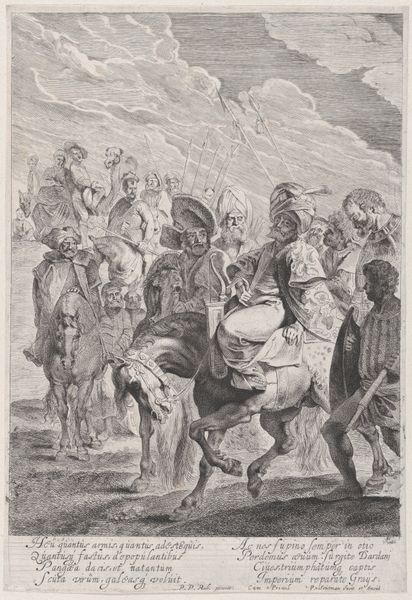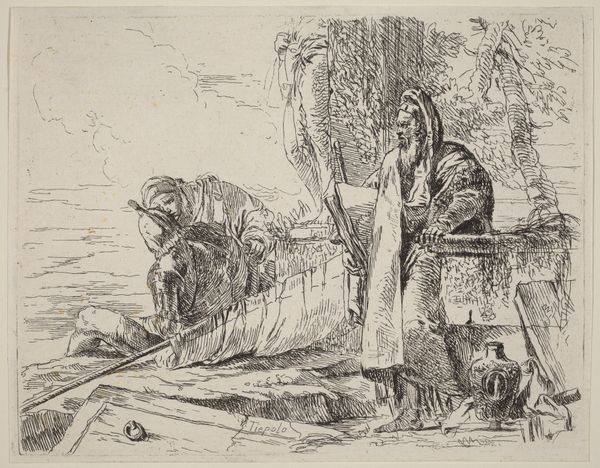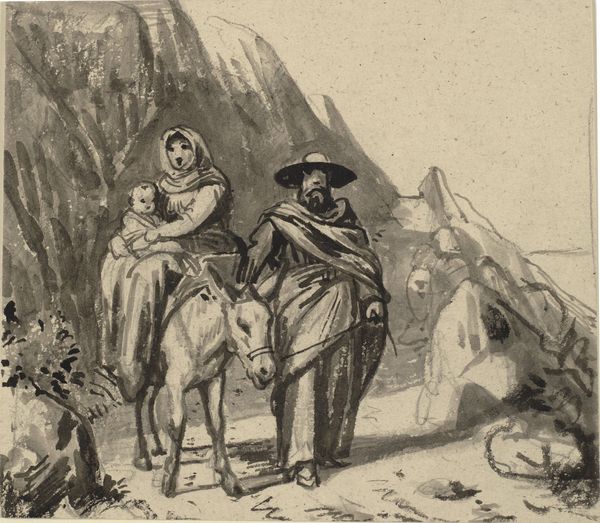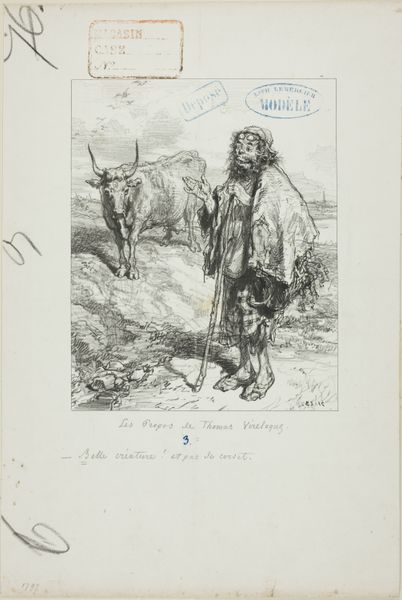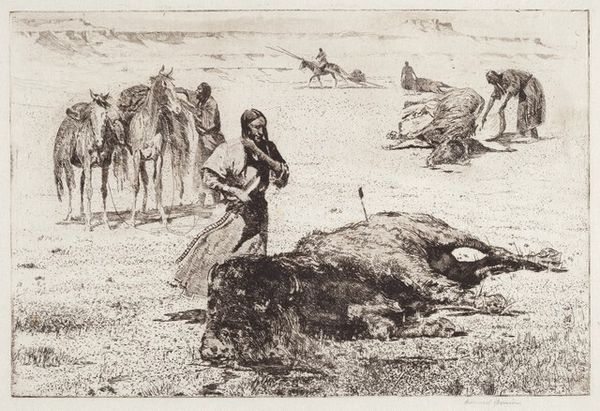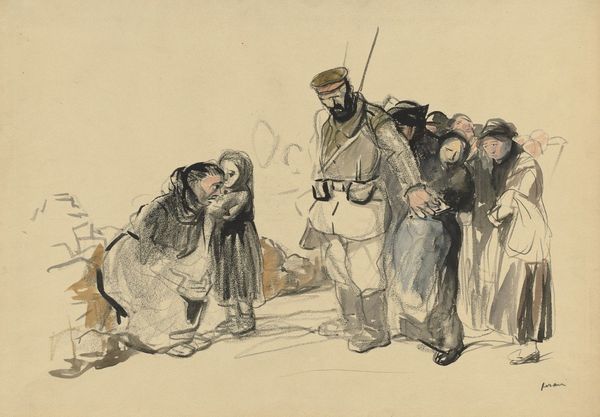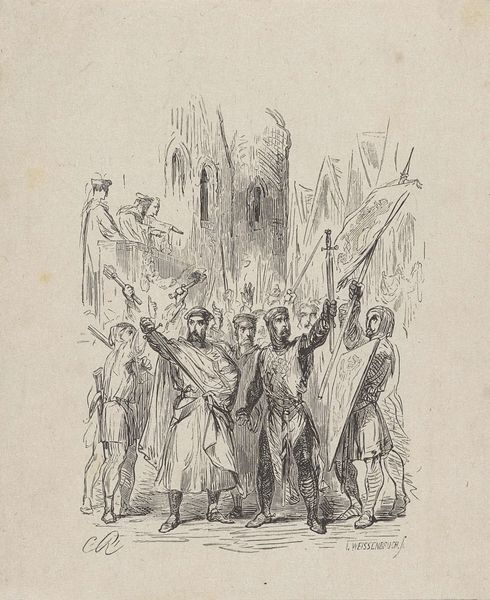
drawing, pencil, pastel
#
portrait
#
drawing
#
landscape
#
figuration
#
pencil
#
pastel
#
history-painting
#
modernism
#
realism
Copyright: Public Domain: Artvee
Editor: Here we have Jean-Louis Forain's "En esclavage dans le Nord," created around 1914-1919 using pencil and pastel. It feels…bleak, the muted colours and rough strokes creating a sense of hardship. What jumps out at you when you look at it? Curator: Oh, bleak is just the tip of the iceberg! For me, it's a raw scream on paper. This work, capturing a scene of civilian suffering during World War I, goes straight to the gut, doesn’t it? Notice the crucifix-like figure on the left - not actually Christ, I suspect, but equally tragic, almost a symbol of violated humanity. It's like Forain took his charcoal and etched pain directly from his soul. Makes you wonder what horrors he witnessed. What feelings does it spark in you? Editor: I see that now, the figure like a distorted Christ. It does evoke pain, a sort of silent suffering, but also… resilience, maybe? It's in the way the women huddle together. Curator: Resilience... yes, absolutely. It's easy to focus on the gloom, but Forain wasn't just documenting despair, he was showing us survival. Those women, those children in the background – they’re broken, yes, but not defeated. Look at how they are sheltering near what has been broken in the town. Almost building something out of it to continue their life's journey. Isn't it beautiful in an extremely heartbreaking way? Editor: It is. I think I came in seeing only the surface level of tragedy, but now I see the strength underneath. Curator: That's the magic of art, isn’t it? To show us the multiple layers of life in even the darkest of corners. Thanks for walking through this piece with me today.
Comments
No comments
Be the first to comment and join the conversation on the ultimate creative platform.
